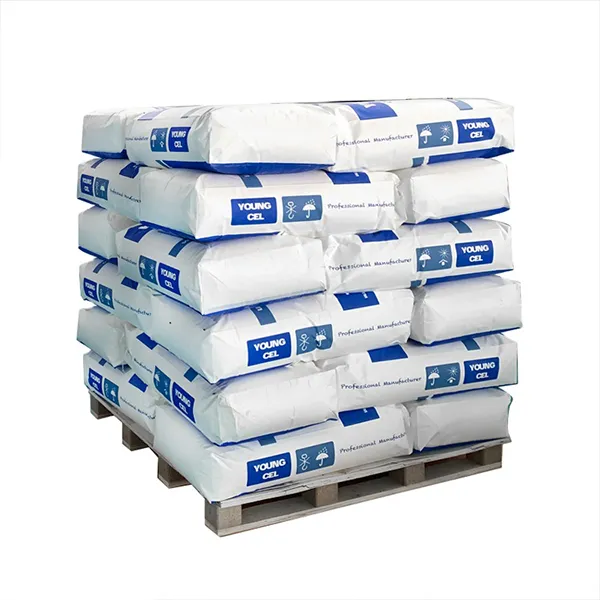The Dynamics of Cellulose Powder Prices
Cellulose powder, a versatile and widely used industrial product, is derived from cellulose—the most abundant natural polymer found in plant cell walls. This fine white powder plays an essential role in various industries, including pharmaceuticals, food, cosmetics, and textiles. Given its integral applications, understanding the pricing dynamics of cellulose powder is crucial for manufacturers, suppliers, and consumers alike.
Market Influences on Pricing
The price of cellulose powder is influenced by several factors, including raw material costs, production processes, demand and supply dynamics, and global market trends. The primary source of cellulose is wood pulp, and fluctuations in timber prices can significantly affect cellulose powder costs. As timber becomes scarcer due to deforestation and environmental regulations, the cost of producing cellulose powder may rise, leading to an increase in market prices.
Moreover, technological advancements in the production and processing of cellulose also play a vital role in determining prices. Innovative production techniques that enhance yield or reduce costs can lead to more affordable cellulose powder. Conversely, increased production costs, due to more stringent environmental regulations or higher labor costs, can elevate the final price for consumers.
Supply and Demand Dynamics
The global demand for cellulose powder continues to grow, attributed primarily to its use in food and pharmaceutical industries. In the food sector, cellulose powder serves as a thickening agent, stabilizer, and texturizer in various products, including sauces, ice creams, and baked goods. Its ability to retain moisture and enhance the texture makes it an indispensable ingredient.
In pharmaceuticals, cellulose powder is often utilized as a binding and disintegrating agent in tablet formulations, contributing to the efficiency of drug delivery systems. The growth of the global health and wellness market, coupled with increasing consumer awareness regarding the benefits of plant-derived ingredients, has contributed to the rising demand for cellulose powder.
However, the supply of cellulose powder may be constrained by factors such as production capacity and raw material availability. Industries reliant on cellulose powder must continuously assess their supply chains to mitigate disruptions. Any imbalance in the supply and demand equation can lead to price volatility.
cellulose powder prices

Global Trade and Economic Factors
The globalization of trade has also impacted cellulose powder pricing. Countries that produce cellulose-rich raw materials can export finished products at competitive prices, influenced by their domestic market conditions, labor costs, and regulatory environments. Regions with abundant wood resources may find themselves at an advantage, allowing them to produce cellulose powder at lower costs compared to others.
Exchange rates and trade tariffs can further complicate the pricing landscape. For instance, if the currency of a major exporting country strengthens, the cost of cellulose powder for importing nations could increase, thus altering the market dynamics.
Future Trends
Looking ahead, the cellulose powder market is expected to evolve, driven by sustainability trends and the increasing need for eco-friendly products. As industries focus on reducing their environmental footprints, the demand for biodegradable and renewable materials like cellulose powder is likely to rise. This shift could lead to more investment in sustainable forestry practices and the innovation of alternative cellulose sources, such as agricultural residues.
Moreover, the rise of green chemistry practices aims to reduce the environmental impact of traditional manufacturing processes. Companies investing in these sustainable technologies may be able to lower production costs, subsequently influencing cellulose powder prices favorably.
Conclusion
In summary, the pricing of cellulose powder is a complex interplay of raw material costs, production processes, global demand, and trade dynamics. As industries evolve and consumer preferences shift toward sustainability, the cellulose powder market is poised for significant changes. Stakeholders must remain vigilant and adaptable to navigate the fluctuations in price and supply, ensuring their operations remain viable in an ever-changing economic landscape. Understanding these factors is essential for making informed decisions in the procurement of this crucial industrial ingredient.
-
Rdp Powder: Key Considerations for Wholesalers in the Building Materials IndustryNewsJul.08,2025
-
Key Considerations for Wholesalers: Navigating the World of Hpmc - Based ProductsNewsJul.08,2025
-
Hpmc Detergent: Key Considerations for WholesalersNewsJul.08,2025
-
Key Considerations for Wholesalers: China Hpmc For Tile Adhesive, Coating Additives, Concrete Additives, and MoreNewsJul.08,2025
-
Crucial Considerations for Wholesalers: Navigating the World of Construction MaterialsNewsJul.08,2025
-
Key Considerations for Wholesalers Sourcing Additive For Cement, Additive For Concrete, Additive For Putty from Additive Manufacturer Shijiazhuang Gaocheng District Yongfeng Cellulose Co., Ltd.NewsJul.08,2025




